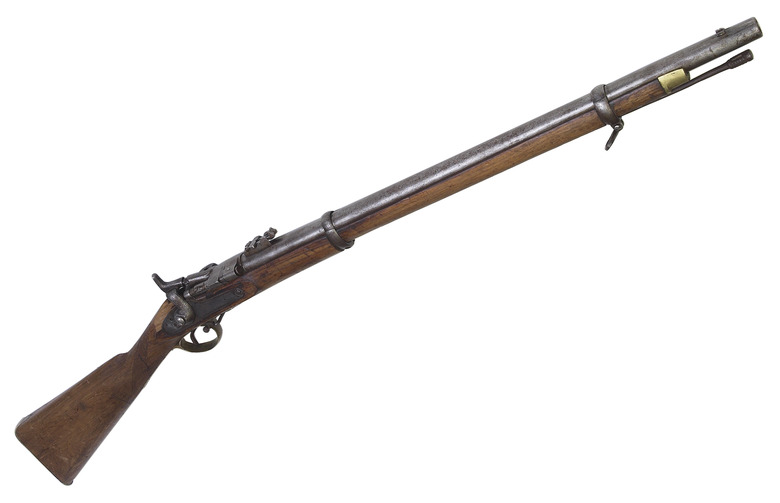Blue Steel Vs. High Carbon Steel
Bluing is chemical process for coating steel to prevent rust from forming and has nothing to do with the steel's composition. High-carbon steel, on the other hand, has everything to do with composition. Steel is a mixture of iron and carbon — the more carbon, the harder the steel. The difference between blued steel and high-carbon steel is vast, since the two are only tangentially related.
Blued Steel
Blued Steel
Steel's main component, iron, is prone to rust — and bluing is a chemical treatment of the steel's surface to prevent rust. For example, since firearms are used outdoors, bluing is applied to all exposed steel parts. The bluing process involves using various chemicals that etch into and color the steel, according to Rand Esser, metals patina specialist at the University of Wyoming.
Carbon Steel
Carbon Steel
Steel is made by mixing molten iron with carbon. Fine carbon powder is mixed in with the molten iron; the carbon molecules chemically fuse with the iron molecules to create steel. Picture a hacksaw cutting an iron pipe: The hacksaw blade is high-carbon steel, while the pipe is low-carbon steel. The hacksaw blade cuts the pipe because it's steel is harder.
The Bluing Process
The Bluing Process
Any kind of steel, from low carbon to high carbon, can be blued. Since bluing is a surface treatment, it doesn't matter what kind of steel it's applied to. Worth noting, however, is that bluing is for iron and steel only — and doesn't work on copper, aluminum or other metals. For these metals, different surface chemical treatments are used.
No Relationship
No Relationship
Because bluing is a surface chemical treatment of steel to prevent rust, and high-carbon content refers to the composition of the base metal, there is little relationship between the two. Bluing and carbon content is similar to applying paint to wood — the paint does not care if the wood is maple, pine or oak.
Cite This Article
MLA
Oldhand, Tony. "Blue Steel Vs. High Carbon Steel" sciencing.com, https://www.sciencing.com/blue-vs-high-carbon-steel-8730952/. 24 April 2017.
APA
Oldhand, Tony. (2017, April 24). Blue Steel Vs. High Carbon Steel. sciencing.com. Retrieved from https://www.sciencing.com/blue-vs-high-carbon-steel-8730952/
Chicago
Oldhand, Tony. Blue Steel Vs. High Carbon Steel last modified March 24, 2022. https://www.sciencing.com/blue-vs-high-carbon-steel-8730952/
